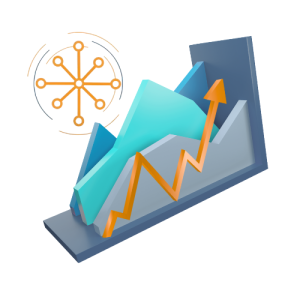
Academic Program Financial Management
Comprehensive visibility into the financial performance of every program and subject across your institution
Are you a Provost, Dean, Head of School, or CFO?
Let us explain why leading universities choose Pilbara for APFM, and how we create a centralised, systemised and standardised model of your entire institution in as little as 4-7 weeks.
Academic Program Financial Management
Most universities rely on spreadsheets to assess program viability, but this approach misses hidden costs, oversimplifies complexity, and can lead to poor decisions. To truly understand program performance, you need a whole-of-institution view. That means capturing data from across finance, HR, payroll, student systems, facilities, and timetabling; and accounting for shared subjects, cross-school teaching, and growing overheads.
Costs sit at the subject level. Revenue typically sits at the program level. Without mapping these properly, your margins are just guesses.
And with overheads on the rise, simple allocation methods like EFTSL often distort the real picture. The volume and complexity of this data is far beyond the limits of a spreadsheet. If you’re serious about making data-driven, sustainable decisions, it’s time for a smarter solution.

Complete Financial Transparency in Weeks
Our proprietary bottom-up model reveals:
- The full cost, revenue, and margin of each academic program
- Detailed insights into every subject instance
- Cross-subsidisation patterns between faculties
- Accurate allocation of revenue across your institution
Core Benefits
- Complete Financial Visibility: Creates a detailed financial model of your entire institution, showing the full cost, revenue, and margin of each academic program and every subject instance
- Bottom-Up Approach: Unlike traditional top-down analyses, APFM starts with students and builds up through subjects, programs, schools/faculties, and campuses, to the institution level
- Reveals Hidden Relationships: Effectively highlights the complex many-to-many relationships between academic programs and subjects that are difficult to model in spreadsheets
- Cross-Subsidisation Insights: Clearly shows how different faculties may be subsidising others, information that’s typically obscured in traditional financial models
- More Accurate Margin Calculation: Provides better revenue allocation methods, resulting in more accurate margin calculations for academic programs


Implementation Advantages
- Rapid Deployment: The first model can be built in just 4-7 weeks, leveraging 25 years of experience with higher education data systems
- Data Integration Expertise: Overcomes the challenge of connecting multiple siloed source systems, a significant hurdle with traditional spreadsheets
- Evolutionary Design: Models are designed to grow and evolve with the institution over time, not just provide a static snapshot
Why is it essential to use?
- Optimising resources
- Identifying subject candidates for redesign or elimination
- Tuition price setting
- Improving the budget process
- Analysing academic workload profiles
- Marginal enrollment cost and break-even analysis
Models Designed to Grow

We can do it all for you!
You provide the raw data, and then we can prepare the data, model the data, build the reports and make it available in as little as 4-7 weeks.
Let’s get started!
Learn more in our 3-minute Academic Program Financial Review demo
We work with leading institutions around the globe



























